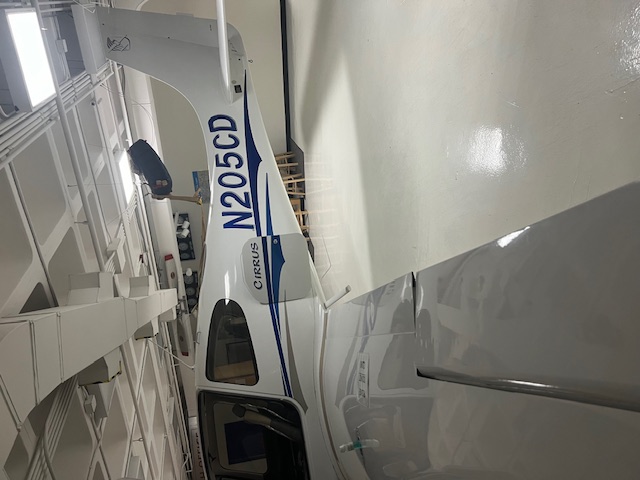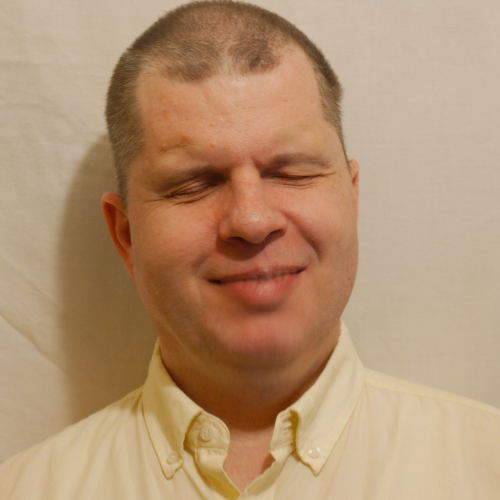
When I learned that the 2024 LEAD conference is taking place in Seattle, I had no doubt that I wanted to visit the museum of flight. But there was only one challenge: their approximately biweekly scheduled tours for blind and visually impaired people were not during the week of the conference. I made a reservation for one of the events, and explained in the notes section that I was attending an accessibility conference and was wondering if we could make an exception for a special tour. Though there was a bit of a communication mishap, the docent supervisor, Brenda Mandt who was also at the conference, even attended my presentation, made the tour happen for me. And it wasn’t a small achievement, because my one and only free afternoon was on August 3rd, when the Jet Blast Bash took place, the absolute most busy day at the museum. But Brenda took the time to set it up for me, and even emailed me instructions on how to get into the museum because of the temporary closure.
The museum has a great accessibility page, detailing services for people with different disabilities. There are sensory days, audio guides, tours for visually impaired people, captioned movies to list a few things. I certainly didn’t have time to check out everything, but I was most interested in a tour for blind people.
I have to say, it was the best thing to do. I was met by Gary, who volunteers to guide some of the tours. During our conversation, I found out that he was not only knowledgeable about the museum, but he was a retired pilot, he was enthusiastic, and he knew everything about the planes.
We went to the hangars, and started going around a Cirrus airplane. It is still in working condition. What I loved about this experience was that it was a small enough aircraft that I could practically reach every part of it. Nothing like my big time favorite, the Boeing 747, which is so big that my only interaction I can ever have with it is touching the side of the plane during boarding. But this small plane really allowed me to get a different understanding of how an aircraft functions. Of course, having traveled for more than 30 years now, I knew what an average tourist would know about flying, but it was theoretical. Even though I was in a different flight museum before, I haven’t touched a real working airplane where I was able to reach each part, so it was absolutely unique and special, not to mention, educational. Greg patiently walked around the plane with me, and pointed out every single detail and explained what is what, and how it works. I think we spent about a half hour around this plane alone.
Later he showed me three fighter jets from World War II, two American aircrafts, and one from Russia. Here it was harder to touch each component, but things made much more sense based on the explanation of the Cirrus.
Finally, we visited a World War I plane, as Greg explained it to me, it was skinned, meaning that the outer layers of the plane were taken off, so one could see the mechanics inside, so he could explain how it works. It was a fascinating experience.
Then he showed me a wind tunnel that the Wright brothers used for their experimentations.
The entire tour was almost two hours, and it gave me a truly unique experience. I know, it was the basics, Very basics, but for someone who has not seen and touched many aircrafts before, it was an absolutely unique experience. I would even say that it was more meaningful than touching some unique objects, for me this is what helped to put flying into a better perspective.
After the tour I found out that not all the tours are the same, what they will show depends on availability, and the preferences of the tour guide, so don’t expect the exact same experience, but I’m sure you will not be disappointed.
The Museum of Flight guided tour definitely earned a place in the list of tactile museums.
Thank you Brenda and Gary for the great experience.
Location
Museum of Flight
9404 East Marginal Way South Seattle, WA 98108


Tom, that sounds a wonderful experience. We had a personal tour on our visit to Seattle a few years ago, and like you, it was amazing to get to feel different aircraft and get that bit more of an understanding of them. Their docents are amazingly helpful and interested in tailoring the tour to what you are interested in. I would highly recommend it to anyone who is blind or vision impaired (or with other needs).
Quentin, I’m glad you had a great experience, too.